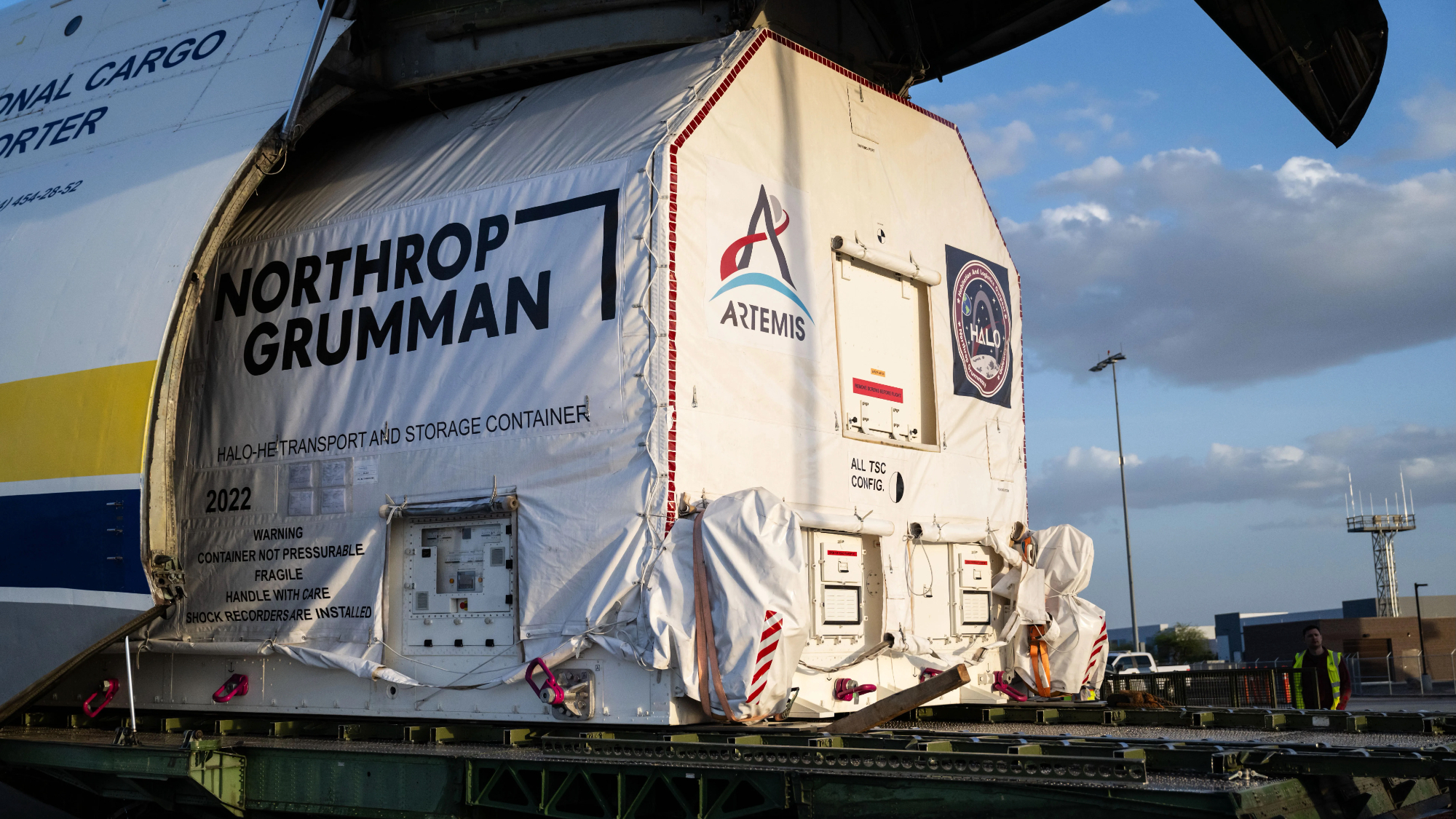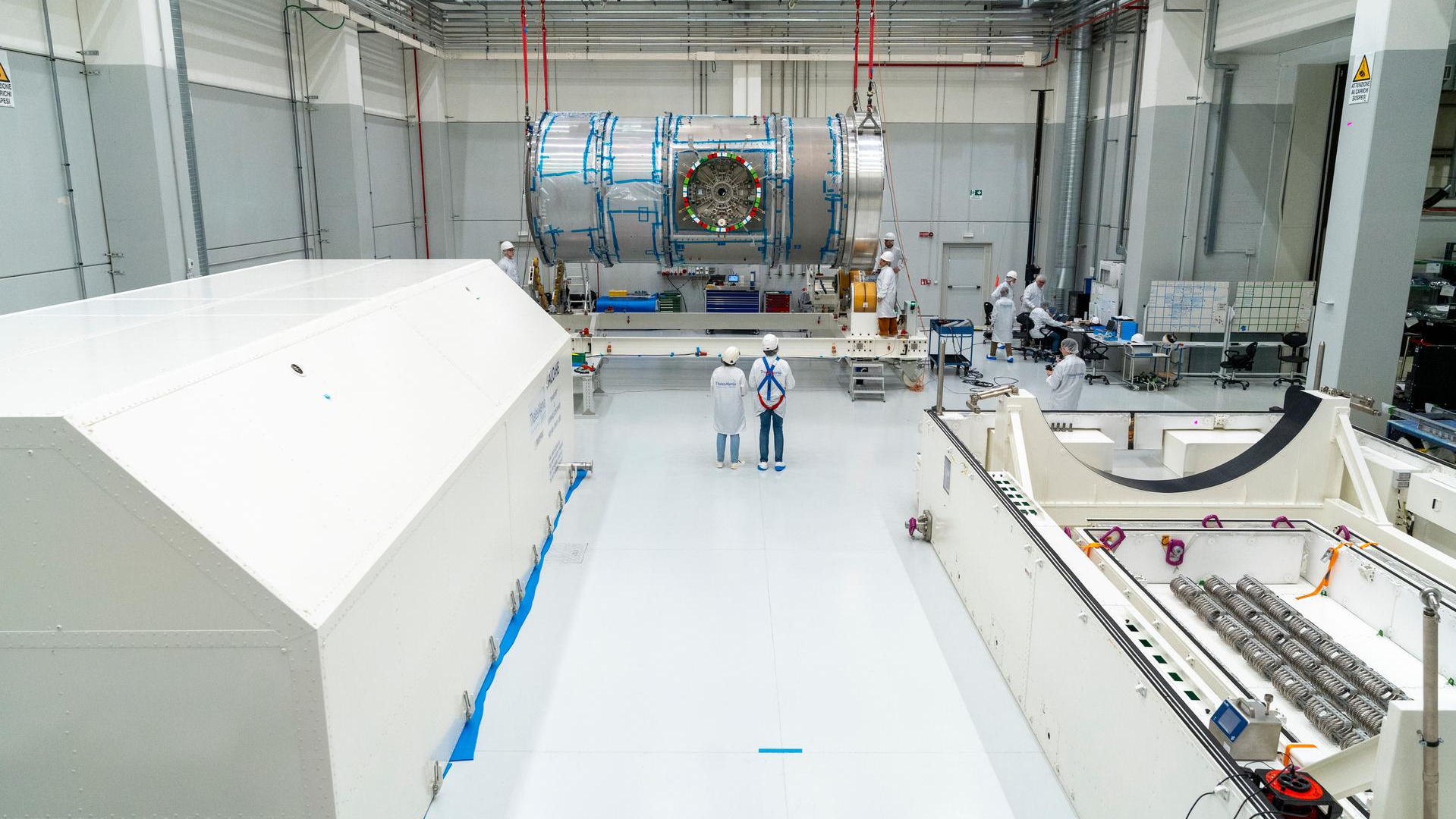
Earlier this month, NASA released a set of photos highlighting a newly arrived module for Gateway, a small space station that the agency aims to launch to lunar orbit in 2027.
That module is HALO (Habitation and Logistics Outpost), which will serve as a living and working space for astronauts aboard Gateway.
A cargo plane flew the HALO module to the U.S. from Turin, Italy, where it was constructed by the company Thales Alenia Space. The cargo plane landed at Phoenix-Mesa Gateway Airport in Mesa, Arizona on April 1.

The newly released photos give you a good feel for the size of the lunar module, which takes up most of the space in the plane’s large cargo hold.
The next stop for the HALO module was Northrop Grumman’s integration and test facility in Gilbert, Arizona, where it's undergoing final outfitting. Northrop Grumman is one of the contractors working on NASA’s Artemis program of moon exploration, which sees Gateway as a vital piece of infrastructure.
The agency says that the lunar station will help "chart a path of scientific discovery toward the first crewed missions to Mars," which will follow after NASA establishes a sustainable human presence on the moon — a key Artemis goal.

NASA calls the HALO module a "core component" of Gateway. Aside from providing astronaut living quarters, the module will offer a range of utilities like command and control, power distribution, communications and tracking. It will also enable research, supporting internal and external science payloads.
After Northrop Grumman finishes its HALO work, the module will head to NASA’s Kennedy Space Center in Florida. There, it will be integrated with Gateway's Power and Propulsion Element ahead of a planned 2027 launch atop a SpaceX Falcon Heavy rocket.







